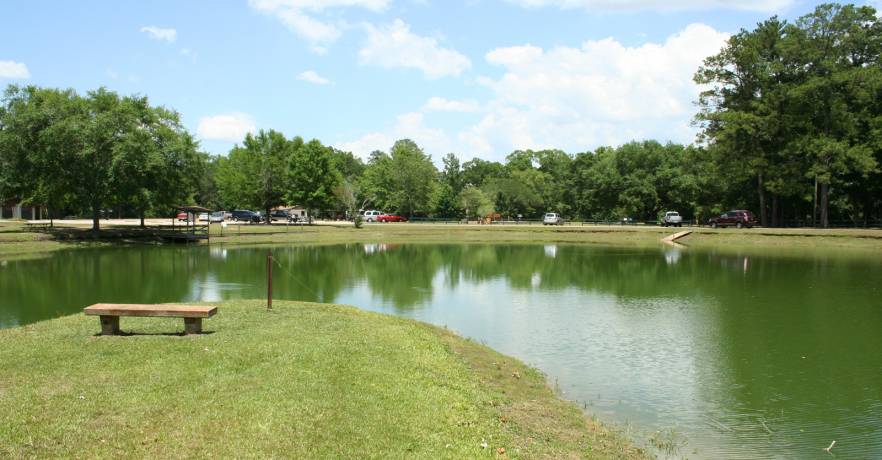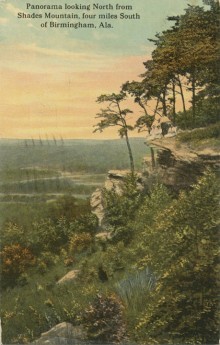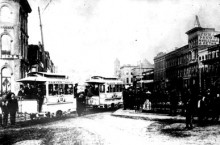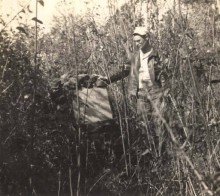During the 1930s, the Great Depression era, many writers were employed to interview people and write stories about life in the United States. The program was named the U.S. Work Projects Administration, Federal Writers’ Project and it gave employment to historians, teachers, writers, librarians, and other white-collar workers.
This is a transcribed, unedited, handwritten story from a WPA writer.
Legend of Blue Pond
(a lime sink)
An Indian chief in the vicinity had a beautiful daughter, who fell in love with a certain young brave, which displeased her father very much because he disapproved of young men. So he prepared to execute him to get rid of him, but the ground sank and swallowed the whole company into a pit said to be bottomless. This is off the Anniston- Atlanta highway. (Woodstock Spring)
It was said that whoever drank of the old Woodstock spring in Anniston would return sometime, to the vicinity.
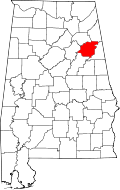
Legend of how the north boundary of Calhoun County was fixed.
Cherokee and Creek Indians were disputing over the boundary between them, so a warrior on horseback rode toward the setting sun, and (the) path where (the) horse ran was the boundary – now the north boundary of Calhoun County.
ALABAMA FOOTPRINTS – Volume I – IV: Four Volumes in One (Volume 1-4)
BUY ONE GET ONE FREE! The first four Alabama Footprints books have been combined into one book,
ALABAMA FOOTPRINTS Exploration
ALABAMA FOOTPRINTS Settlement
ALABAMA FOOTPRINTS Pioneers
ALABAMA FOOTPRINTS Confrontation
From the time of the discovery of America restless, resolute, brave, and adventurous men and women crossed oceans and the wilderness in pursuit of their destiny. Many traveled to what would become the State of Alabama. They followed the Native American trails and their entrance into this area eventually pushed out the Native Americans. Over the years, many of their stories have been lost and/or forgotten. This book (four-books-in-one) reveals the stories published in volumes I-IV of the Alabama Footprints series.


